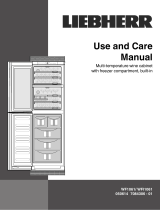
9
* Depending on model and options
Malfunctions / Decommissioning / disposing of the appliance
6.3 Customer service
Fig. 12
First of all check whether you can eliminate the fault yourself (see
Malfunction). If this is not possible, contact Customer Services.
You can nd the address in the enclosed customer service list.
WARNING
Risk of injury if repair work is not carried out professionally!
u Have any repairs and action - not expressly specied - on the
appliance and mains cable carried out by service personnel
only. (see 6 Maintenance)
u For the appliance designation Fig. 12 (1), service no. Fig. 12
(2) and the serial no. Fig. 12 (3) refer to the type plate. The
type plate is located on the left, inside the machine.
u Inform customer service and describe the fault, appliance
designation Fig. 12 (1), service no. Fig. 12 (2) and serial no.
Fig. 12 (3).
This will make it possible to provide fast and accurate service.
u Leave the appliance plugged in until customer service arrives.
The food will stay cold for longer.
u Pull out the plug (do not tug on the connection cable
here) or switch o the circuit breaker.u For the appliance
designation Fig. 12 (1), service no. Fig. 12 (2) and the serial
no. Fig. 12 (3) refer to the type plate. The type plate is located
on the left, inside the machine.
u Inform customer service and describe the fault, appliance
designation Fig. 12 (1), service no. Fig. 12 (2) and serial no.
Fig. 12 (3).
This will make it possible to provide fast and accurate service.
u Leave the appliance plugged in until customer service arrives.
The food will stay cold for longer.
u Pull out the plug (do not tug on the connection cable here) or
switch o the circuit breaker.
7 Malfunctions
Your appliance is designed and manufactured for a long life span
and reliable operation. If a malfunction nonetheless occurs during
operation, check whether it is due to a handling error. In this case
you will have to be charged for the costs incurred, even during
the warranty period. You may be able to rectify the following faults
yourself:
Normal noises in the appliance:
Running noise due to speed-regulated compressors.
A bubbling or splashing sound from the coolant owing
through the coolant circuit.
A quiet clicking, when the cooling unit (motor) switches itself on
and o automatically.
Brief humming noise, slightly louder:
- When the motor switches on, when SuperFrost is switched
on, if fresh food has been recently stored or the door has been
open for a long period, the freezing capacity automatically
increases.
- High ambient temperature (s. 1.2 Appliance range of use)
Deep humming - Noise of air owing through the fan.
The compressor runs for a long time:
- It switches to a lower speed when it requires a lower cooling
capacity, to save energy.
- SuperFrost is switched on.
A LED on the bottom rear of the appliance (at the
compressor) ashes regularly every 15 seconds*.
- The inverter is equipped with a diagnostic LED.
The ashing is normal.
External surfaces warm. The heat from the cooling circuit is
used to avoid condensate.
Faults that you can remedy yourself:
The appliance does not function:
- The appliance is not switched on.
u Plug the plug into the mains socket correctly, check fuse
Vibration noises, if the appliance is not set up rmly on
the oor.
u Align the appliance with the adjustable feet.
Temperature is not cold enough:
- Appliance door is not fully closed.
u Close appliance door.
- Ventilation and aeration insucient.
u Clear and clean the ventilation grille.
- High ambient temperature
u see 1.2 Appliance range of use.
- Excessive quantity of fresh food stored without actuating
SuperFrost.
u see 5.6.4 Setting the temperature
- The appliance was opened too frequently or for too long.
u Wait to see if the appliance goes back to the required
temperature by itself. If not, contact customer services (see
maintenance).
- Temperature set incorrectly.
u Set colder and check after 24 hours.
- Appliance is set up too close to a heat source.
u
Change the location of the appliance or adjust the heat source.
The interior light does not light up.
- Appliance is not switched on.
u Switch on the appliance.
- The door was open for longer than 15 minutes.
u Interior light switches o automatically if the door stays open
for approx. 15 minutes.
Icing up or condensate forming.
- The door seal may have also slipped out of its groove.
u Check the door seal.
With the following faults, contact customer
service:
- The door seal is defective or requires replacement for another
reason. Door seal exchangeable.
- DEMO is shown in the temperature display.
- LED lighting is defective or the cover is damaged.
WARNINGS:
Risk of injury due to electric shock!
Live parts are located under the cover.
• Have the LED interior light changed or repaired only by the
customer service or by specialized personnel trained for the
purpose.
Danger of injury by LED lamp!
The light intensity of the LED lighting corresponds to risk group
RG 2.
If the cover is defective:
• Do not look into the illumination with optical lenses from the
immediate proximity. This can cause injury to the eyes.
8 Decommissioning
8.1 Switching o the appliance
Note
u To switch o the entire appliance you only need to switch
o the freezer section. The fridge section is automatically
switched o with it.
8.1.1 Switching o the freezer section
u Press On/O button for the freezer section Fig. 11 (9) for at
least 3s.
The temperature displays are dark. The entire appliance is
switched o.











